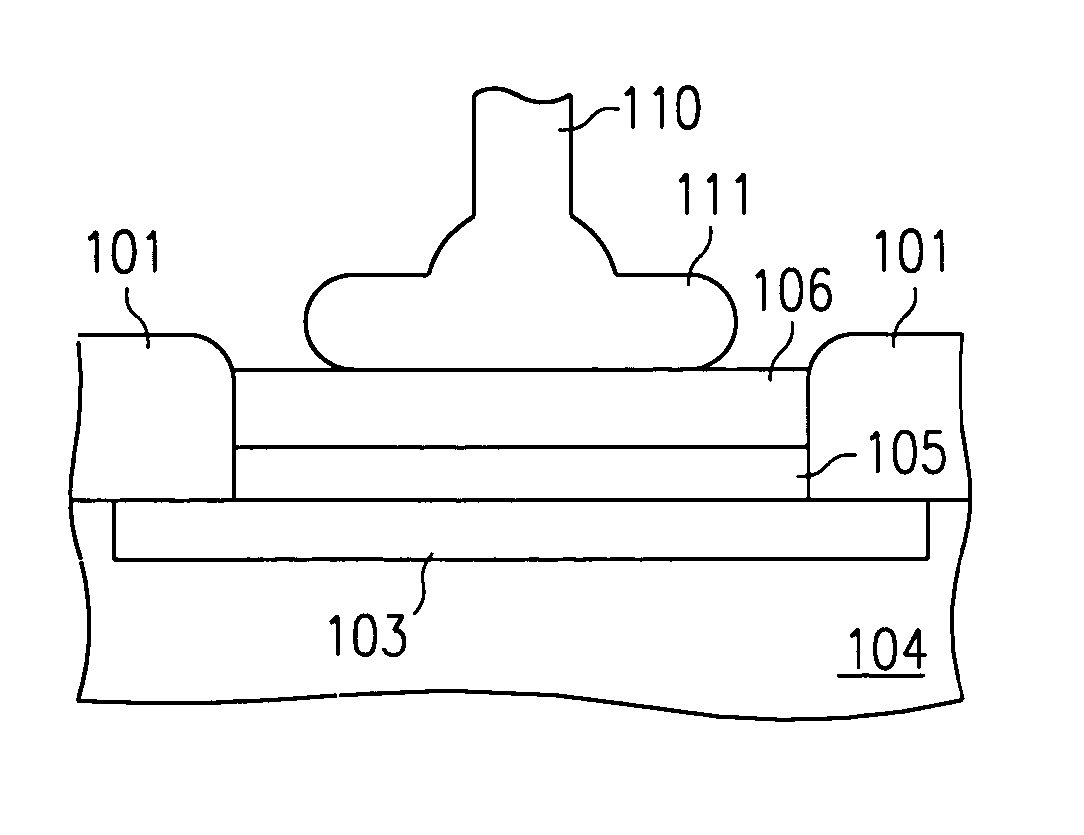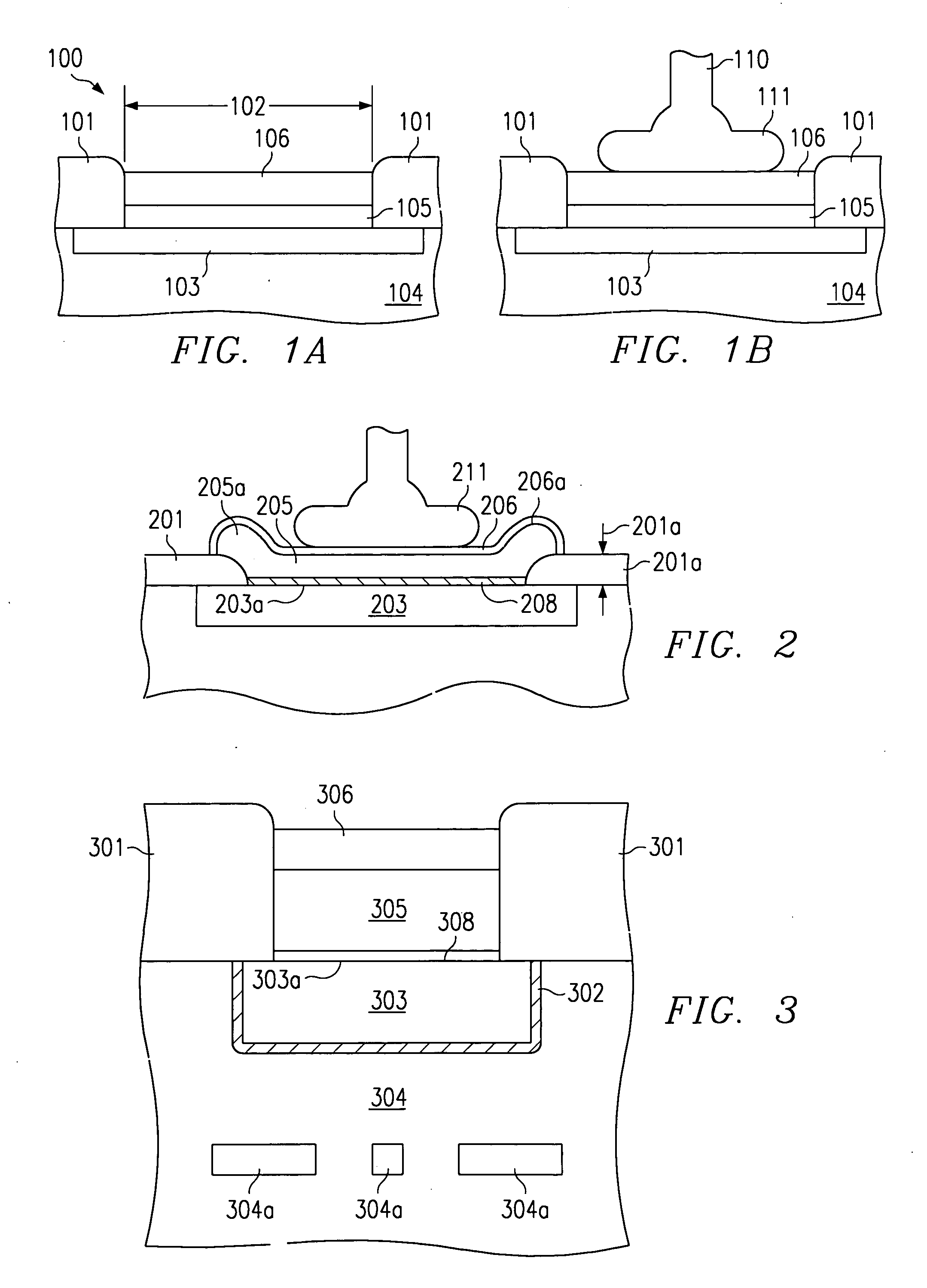Wire bonding process for copper-metallized integrated circuits
a technology of integrated circuits and wire bonding, which is applied in the direction of semiconductor devices, semiconductor/solid-state device details, electrical apparatus, etc., can solve the problems of significant technological challenges, pronounced aluminum sensitivity to electromigration becoming a serious obstacle, and the relative high resistivity of interconnecting aluminum now appears inferior to the lower resistivity of metals such as copper, so as to avoid the cost of new capital investment and prevent excessive copper up-diffusion
- Summary
- Abstract
- Description
- Claims
- Application Information
AI Technical Summary
Benefits of technology
Problems solved by technology
Method used
Image
Examples
Embodiment Construction
[0026]FIG. 1A shows a schematic cross section of the preferred embodiment of the invention, generally designated 100. An integrated circuit (IC) has copper interconnecting metallization and is covered by a moisture-impenetrable protective overcoat 101. This overcoat is usually made of silicon nitride, commonly 0.5 to 1.0 μm thick. A window 102 is opened in the overcoat in order to expose portion of the copper metallization 103. Not shown in FIG. 1A is the underlayer embedding the copper and preventing its diffusion into parts of the IC (usually made of tantalum nitride, tantalum silicon nitride, tungsten nitride, tungsten silicon nitride, titanium, titanium nitride, or titanium tungsten; see FIG. 3).
[0027] In FIG. 1A, the dielectric IC portions 104 are only summarily indicated. These electrically insulating portions may include not only the traditional plasma-enhanced chemical vapor deposited dielectrics such as silicon dioxide, but also newer dielectric materials having lower diel...
PUM
 Login to View More
Login to View More Abstract
Description
Claims
Application Information
 Login to View More
Login to View More - R&D
- Intellectual Property
- Life Sciences
- Materials
- Tech Scout
- Unparalleled Data Quality
- Higher Quality Content
- 60% Fewer Hallucinations
Browse by: Latest US Patents, China's latest patents, Technical Efficacy Thesaurus, Application Domain, Technology Topic, Popular Technical Reports.
© 2025 PatSnap. All rights reserved.Legal|Privacy policy|Modern Slavery Act Transparency Statement|Sitemap|About US| Contact US: help@patsnap.com



